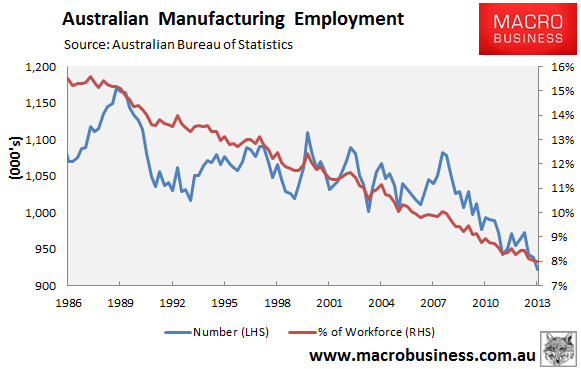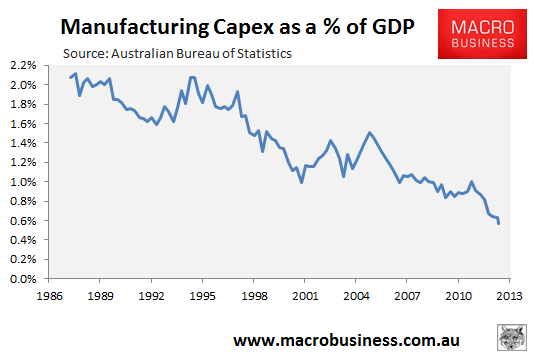
Monash University’s Centre of Policy Studies and the Allen Consulting Group have released a study that attempts to estimate the economic impact from the car industry shutting down over a two year period from 2017 to 2018.
According to the results of the study, published today in the AFR, Australia’s GDP would be $7.3 billion (0.6%) smaller by 2018, with an overall hit to the economy of $21.5 billion in net present value (NPV) terms. Around 33,000 jobs would be lost in Melbourne with a 1.4% cut in gross regional product by 2018, whereas 6,600 jobs would be lost in Adelaide with economic output falling by 0.9%.
The study, which is clearly aimed at countering criticism of taxpayer subsidies to the automotive industry, supports the views of Professor Yuran Roos, Chairman of South Australia’s Advanced Manufacturing Council, who in last week’s interview on The Business claimed that the closure of the car industry would be severe. Roos argued that the multiplier effect of the car industry is large, with some 15,000 to 16,000 people employed directly, another 45,000 to 50,000 in suppliers, and probably 250,000 jobs dependent on the industry throughout Australia. And given that taxpayer subsidies equate to only around $500 million a year – or roughly $21 per head of population – there are very few other industries where the same level of assistance would have the same employment effect, at least in the shorter-term.
In my view, the car industry presents a no-win situation for the Government. Like it or not, the industry is too big to be euthanized at a time when Australia’s job market is likely to come under intense pressure as the mining investment boom unwinds.
At the same time, assuming the Government does agree to another assistance package, keeping the car industry going for a few more years, we are very likely to return to this position down the track, with the industry once again facing closure and the taxpayer again being called upon for support.
It should also be recognised that the car industry is just one piece of broader manufacturing sector, which appears to be in terminal decline under the pressures of the high Australian dollar and a broader lack of competitiveness. Indeed, the total number of people employed in manufacturing and the sector’s employment share have have fallen sharply over the past 30-years (see next chart).

Whereas manufacturing capital expenditures (capex) have also contracted, falling from 2.1% of GDP in 1987 to only 0.6% of GDP as at June 2013 – an all-time low (see next chart).

Until the Australian dollar falls to a more sustainable level, and policy makers embark on a widespread program of micro-economic (structural reform), Australia’s non-mining economy (not just manufacturing) will remain uncompetitive and trade exposed industries will continue to close.
The broader issue of competitiveness should be the Government’s primary focus, rather than industry assistance per se.

